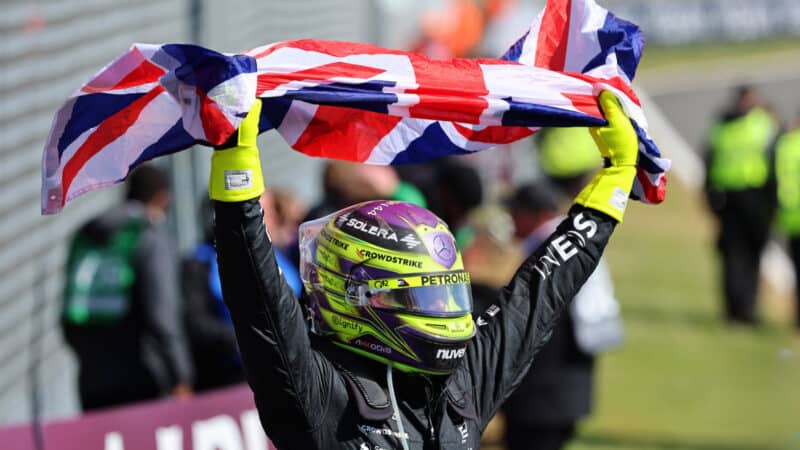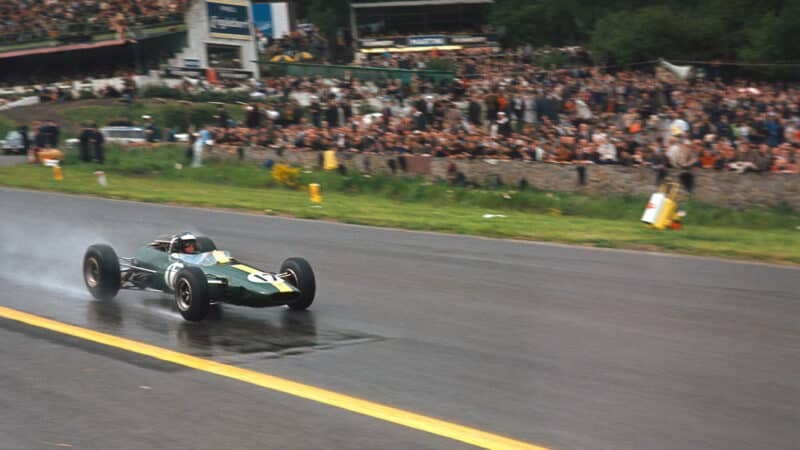Numerically more successful than all of the above, Lewis Hamilton has won 105 F1 grands prix and six F1 grand chelems. He could have had more than six, had not his fast and ambitious Mercedes team-mates Nico Rosberg and Valtteri Bottas run him close enough, often enough, to snatch from him pole positions and/or fastest laps, and frequently lead Hamilton-dominated grands prix during pit stop windows. Indeed, Rosberg has two F1 grands chelems of his own, scored at Sochi and Baku in 2016. Perhaps Lewis’s most clinical F1 grand chelem came at Silverstone in 2017 – a hugely popular result with not only the spectators but also the driver himself, given his particular devotion to winning at home.
Like Alberto Ascari, who bagged his five F1 grands chelems in his two years of F1/F2 domination in 1952 and 1953, Max Verstappen has also collected five grands chelems (so far), all of them earned within the 2019-2024 ‘point for fastest lap’ rule set that made them trickier to achieve. Max scored his first F1 grand chelem on his team’s home circuit, the Red Bull Ring, in 2021. His second, at Imola the following year, was totalitarian in the best sense of the word; indeed, that weekend he also won the sprint race, starting it from P1 for good measure. In 2023, he bagged F1 grands chelems in Spain and Qatar, and he kicked off 2024 in Bahrain with an F1 grand chelem masterclass. He is perhaps the modern driver best equipped to threaten the all-time F1 grand chelem record, about which I will tell you more shortly.
Nelson Piquet scored three F1 grands chelems, all of them for Brabham; and Mika Häkkinen scored two, both in his first F1 world championship year, 1998, caressing his beautiful McLaren MP4-13 into the grand chelem record books at both Interlagos and Monaco. Fernando Alonso – a man who has built his long F1 career on relentless pace, strategic cunning, and sheer bloody-mindedness – has only one F1 grand chelem to his name, and the reason for that is that, unlike his contemporaries Schumacher, Vettel, Hamilton, and Verstappen, he has never enjoyed the luxury of having a seriously hefty car advantage over his rivals. Nonetheless, in Singapore in 2010, Alonso delivered a night-time parade of perfection. That it occurred during a turbulent and ultimately frustrating season with Ferrari adds a layer of romantic rebellion to the tale. Fernando, who has very rarely found himself in any season’s fastest car as I say, sighted his one shot at grand chelem perfection that weekend, and he made it count. The other F1 world champions who have but one F1 grand chelem to their names are Mike Hawthorn, Niki Lauda, and Damon Hill.

Lewis Hamilton has dominated GP weekends throughout his career
Charles Leclerc produced his one F1 grand chelem (so far) at Albert Park three years ago, in a Ferrari that, for the briefest of spells, looked like the fastest car on the grid. His drive that day was composed, controlling, and – unusually for the Scuderia in its modern-day era, particularly in a race that included a safety car deployment, as the 2022 Australian Grand Prix did – happily devoid of strategic farce.
And, now, we welcome Oscar Piastri to the exclusive F1 grand chelem club. It is too early to say what kind of F1 career awaits him, or even whether he will become an F1 world champion, although we will find out soon enough. Nonetheless, even if he beats his McLaren team-mate Lando Norris to F1 world championship glory this season, which he may well, he will still have about him the whisper of potential rather than the roar of legacy. He is, after all, still only 24. But Zandvoort was not a whisper. It was a shout. And it said, loud and clear: “Here I am.”





